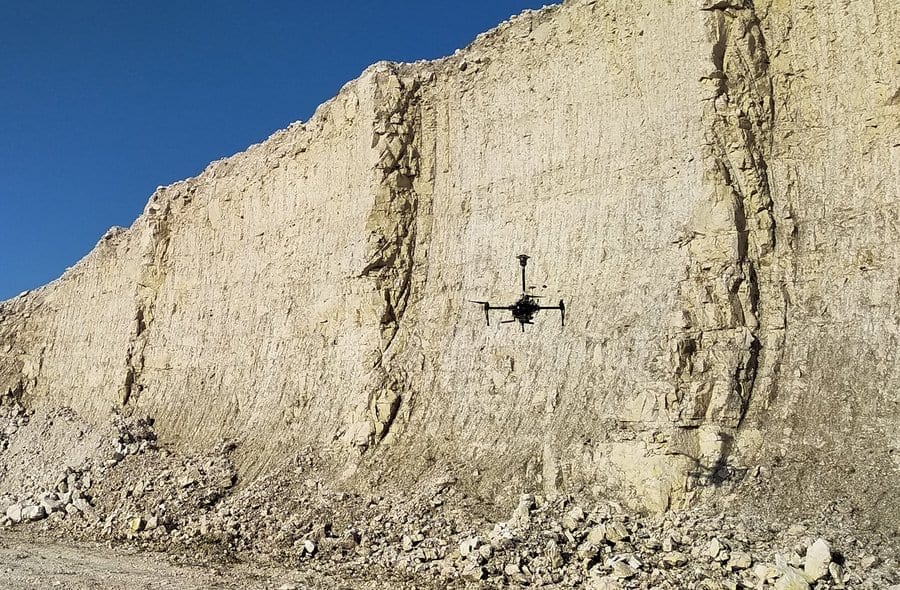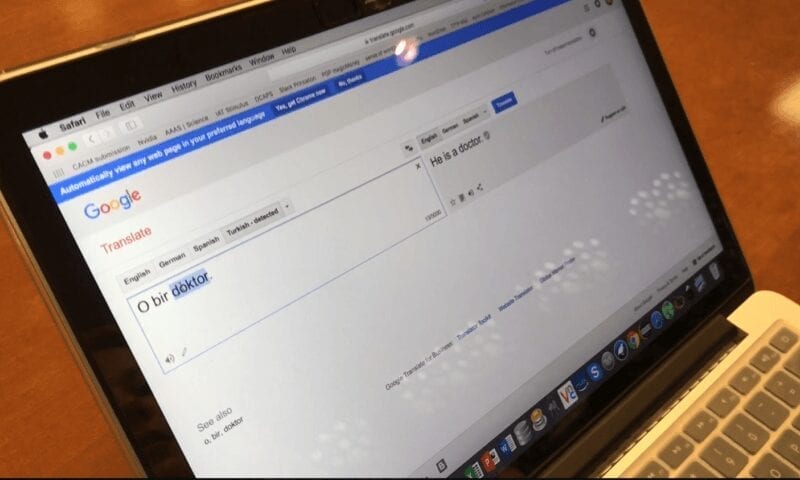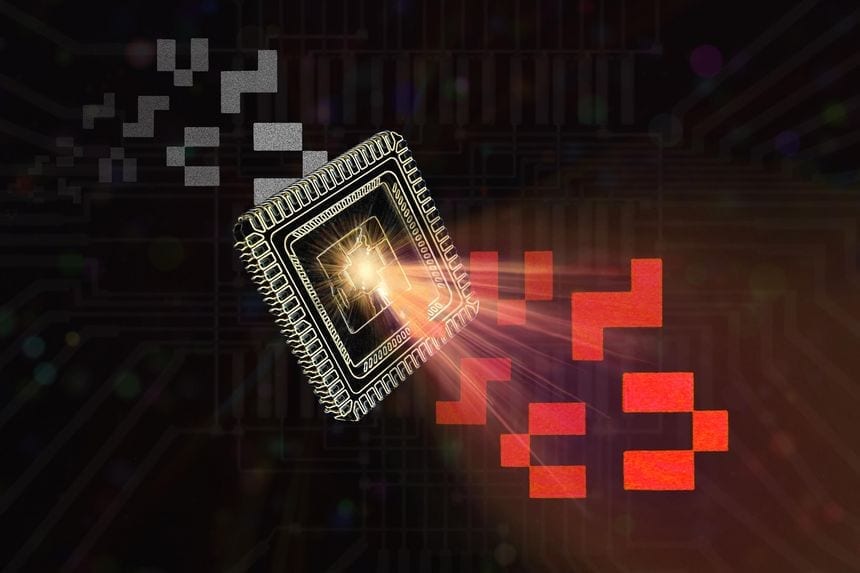Measuring and documenting gravel and limestone quarries, cliff faces and similar natural and man-made formations is often done using drones that photograph the area. New research may make the pilots superfluous. (NB: The vertical rod on top of the drone carries a wind detector for test purposes, and it is not present on the final version of the drone.) Photo: Erdal Kayacan.
Drone pilots may become superfluous in the future. New research from Aarhus University has allowed artificial intelligence to take over control of drones scanning and measuring terrain.
A research project at Aarhus University (AU) in collaboration with the Technical University of Denmark (DTU) aims to make measuring and documenting gravel and limestone quarries much faster, cheaper and easier in the future.
The project has allowed artificial intelligence to take over the human-controlled drones currently being used for the task.
“We’ve made the entire process completely automatic. We tell the drone where to start, and the width of the wall or rock face we want to photograph, and then it flies zig-zag all the way along and lands automatically,” says Associate Professor Erdal Kayacan, an expert in artificial intelligence and drones at the Department of Engineering at Aarhus University.
Measuring and documenting gravel and limestone quarries, cliff faces and similar natural and man-made formations is often done using drones that photograph the area. The recordings are then uploaded to a computer that automatically converts everything into a 3D terrain model.
However, drone pilots are costly, and the measurements are time-consuming because the drone has to be controlled manually to hold the same constant distance to the wall of an excavation, while simultaneously keeping the drone camera perpendicular to the wall.
Furthermore, there must be a specific overlap in the images taken, so that the computer can then “sew together” the images into a large 3D figure.
Researchers from the Department of Engineering at Aarhus University have now automated this process using artificial intelligence.
“Our algorithm ensures that the drone always keeps the same distance to the wall and that the camera constantly repositions itself perpendicular to the wall. At the same time, our algorithm predicts the wind forces acting on the drone body,” says Erdal Kayacan.
This means that the researchers have been able to compensate for one of the major challenges associated with autonomous drone flight: the wind.
“The designed Gaussian process model also predicts the wind to be encountered in the near future. This implies that the drone can get ready and take the corrective actions beforehand,” says Mohit Mehndiratta, a visiting Ph.D. student in the Department of Engineering at Aarhus University.
Today, it takes little more than a light breeze to blow a drone off course, but with the help of Gaussian processes, the team has taken into account gusts and the overall wind speed.
“The drone doesn’t actually measure the wind, it estimates the wind on the basis of input it receives as it moves. This means that the drone responds to the force of the wind, just like when we human beings correct our movements when we are exposed to a strong wind,” says Erdal Kayacan.
The Latest Updates from Bing News & Google News
Go deeper with Bing News on:
Artificial intelligence drones
- IG Drones in talks with Kerala govt to train, create drone workforce for Gulf nations
Farmers need to carry their drones to their farms and click a few buttons on their smartphones. That will automatically set its artificial intelligence (AI) running for the drones to operate on the ...
- Xtend raises $40M to allow human commanders to guide autonomous AI drone missions
Xtend co-founder and Chief Experience Officer Matteo Shapira told SiliconANGLE in an interview that for drones to assist in field operations, such as with police, firefighters or soldiers, drones ...
- Taser maker acquires Northern Virginia drone detection company
Scottsdale, Arizona-based Axon Enterprise Inc., which makes the taser weapon and police body cameras, will acquire Sterling, Virginia-based Dedrone, maker of drone threat detection systems.
- Axon acquires drone company, but no mention of Scottsdale HQ controversy in earnings call
Axon officials did not discuss the lingering controversy over the company's development plans in north Scottsdale.
- Marines Advance Battlefield Tech with AI-Enabled Drones and Anti-Drone Defenses
Marine Corps officers have unveiled plans to incorporate artificial intelligence (AI) to manage drone sensors autonomously and have expressed an urgent desire to deploy a variety of anti-drone ...
Go deeper with Google Headlines on:
Artificial intelligence drones
[google_news title=”” keyword=”artificial intelligence drones” num_posts=”5″ blurb_length=”0″ show_thumb=”left”]
Go deeper with Bing News on:
Autonomous drones
- Arlington to use drones, delivery robots to deliver food to residents in need
The City of Arlington is launching a program to use drones and robots to make deliveries to the city's most vulnerable citizens.
- Lucid Bots secures $9M for drones to clean more than your windows
Cleaning the outside of buildings is a dirty job, and it’s also dangerous. Lucid Bots came on the scene in 2018 with its Sherpa line of drones to clean ...
- Xtend raises $40M to allow human commanders to guide autonomous AI drone missions
Xtend co-founder and Chief Experience Officer Matteo Shapira told SiliconANGLE in an interview that for drones to assist in field operations, such as with police, firefighters or soldiers, drones ...
- US Army tests UAV resupply during live-fire exercises in Hawaii
During live-fire ground combat exercises with the US Army's 25th Infantry Division in Hawaii, an uncrewed vertical take-off and landing aircraft from start-up Soaring autonomously delivered food and ...
- USAF Builds From Scratch and Flies Autonomous Drone in 24 Hours, Must Be Some Record
The U.S. Air Force (USAF) says it may just have found a way to build and fly small, multi-purpose autonomous drones in under 24 hours ...
Go deeper with Google Headlines on:
Autonomous drones
[google_news title=”” keyword=”autonomous drones” num_posts=”5″ blurb_length=”0″ show_thumb=”left”]











